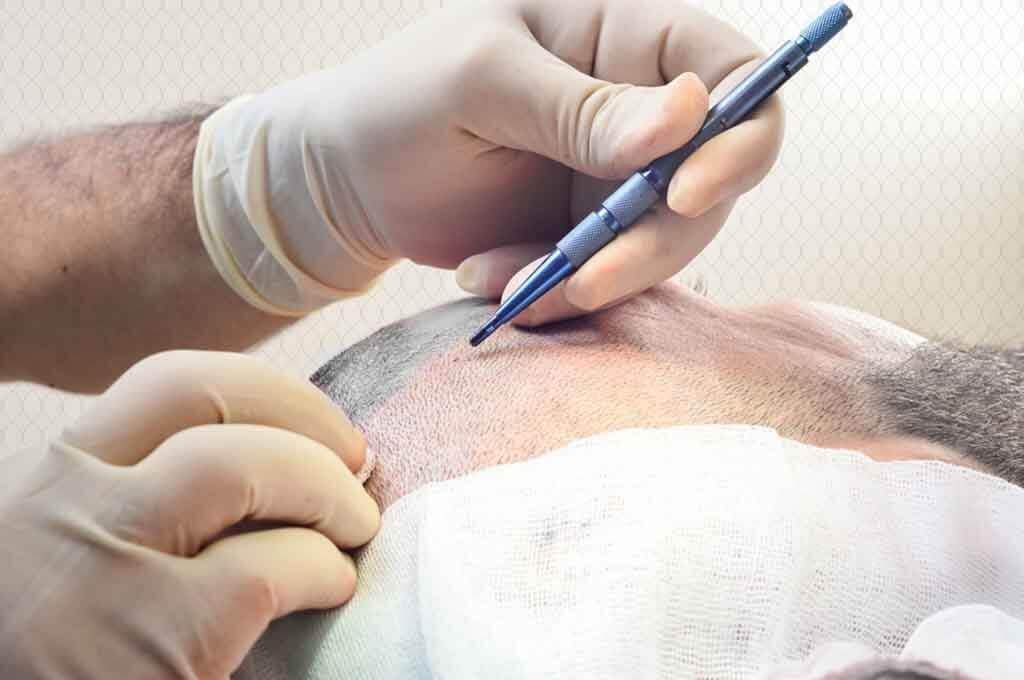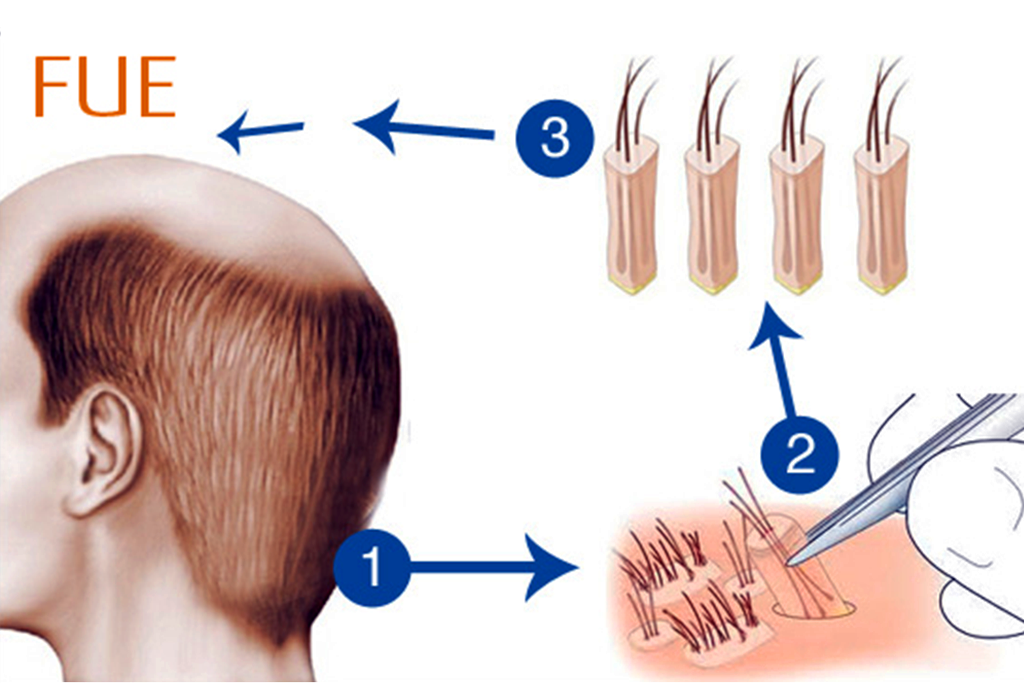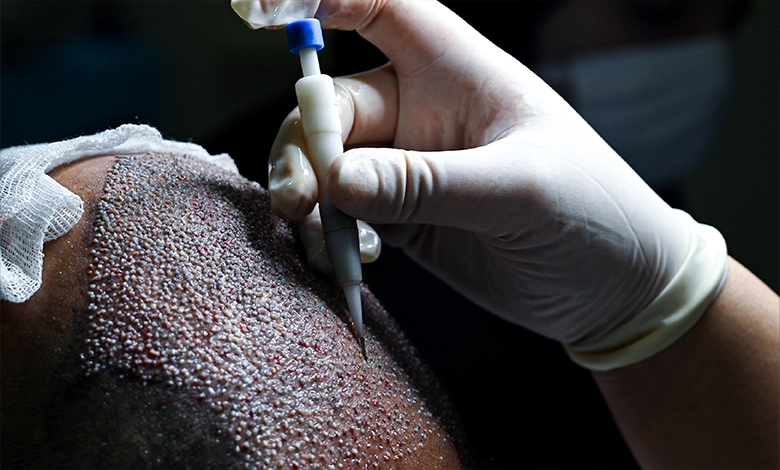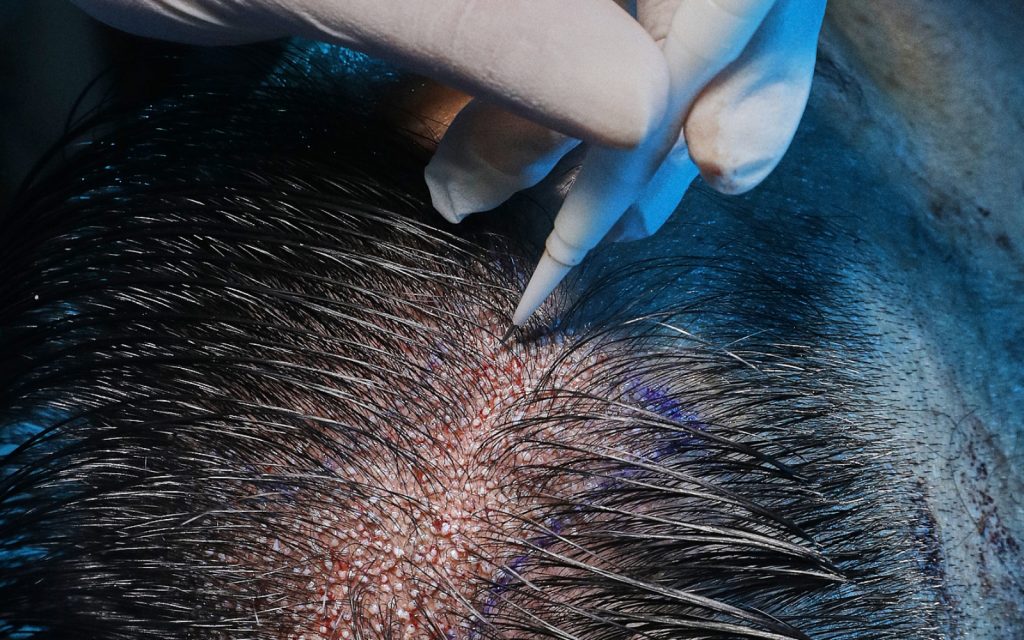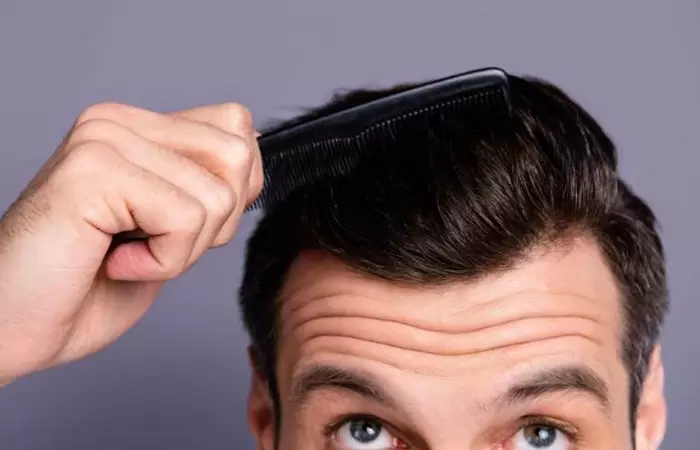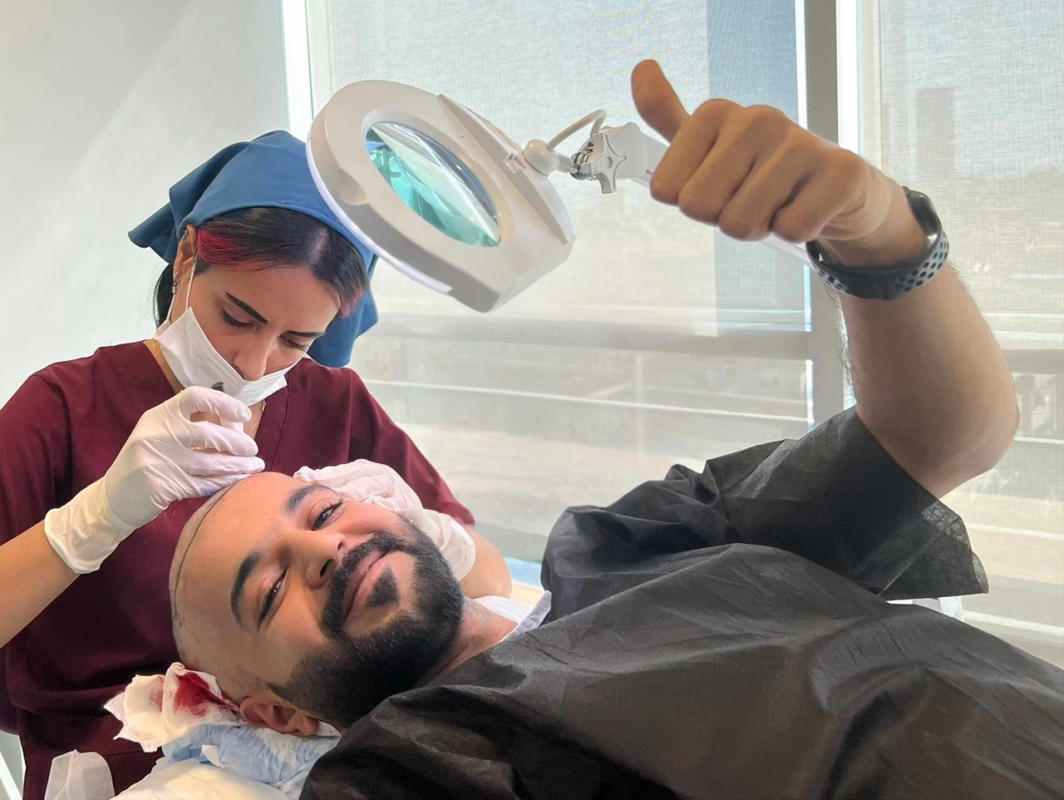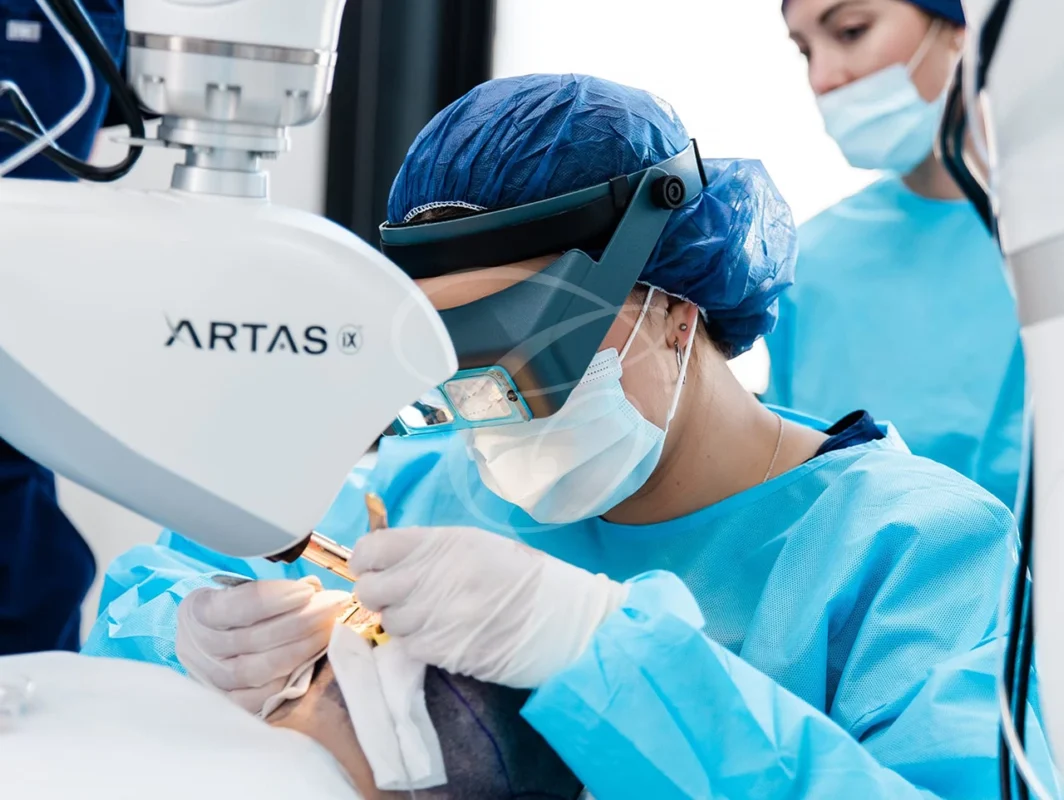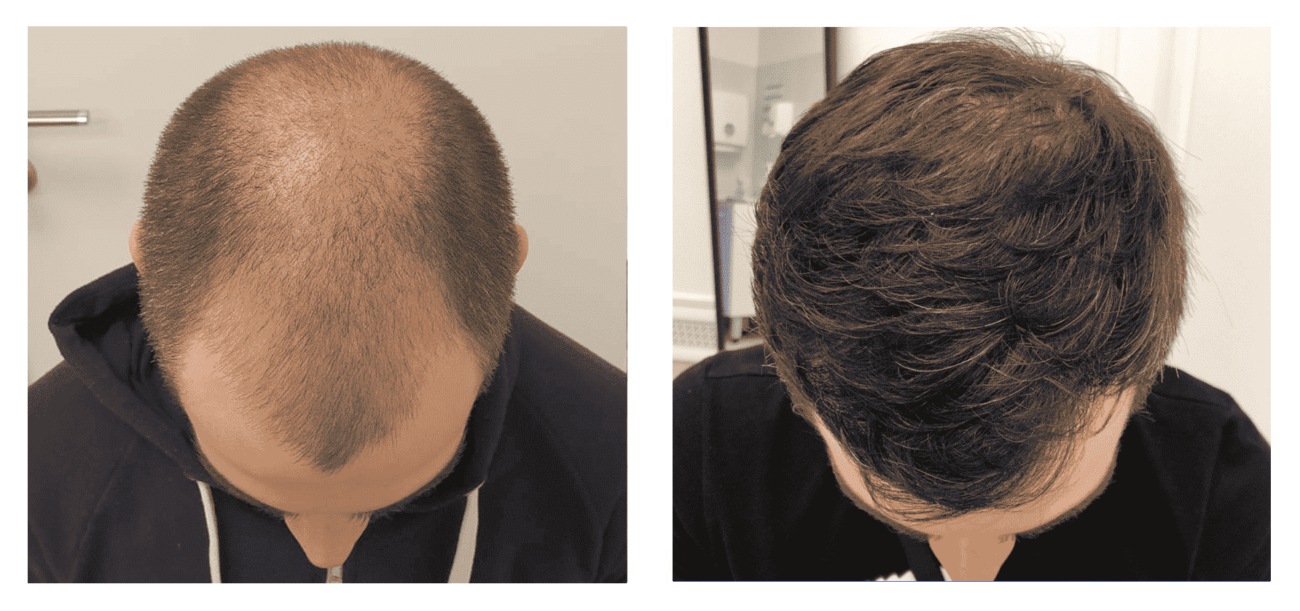Hair Transplantation for Women

Hair transplantation for women has become one of the effective solutions to address hair loss problems that affect self-confidence and overall appearance. Although hair loss is common in men, women also suffer from this problem for various reasons such as hormonal changes, genetic factors, and stress. Hair transplantation provides a permanent and natural solution that helps women restore their hair density and highlight their beauty in a safe and effective way. In this article, we will review the causes of hair loss in women, the types of hair transplant techniques available, and the expected results of hair transplantation operations for women.
The importance of hair transplantation for women in restoring beauty and self-confidence:
Hair is considered a symbol of femininity and beauty for every woman and represents a distinctive element that enhances her appearance, especially if it is thick, long, and free of problems such as split ends or hair loss. Healthy hair adds additional beauty to a woman and enhances her self-confidence, which explains her keenness to care for her hair and maintain it using all possible natural and medical means.
As women age, they may face various hair health problems, such as hair loss that may lead to thinning hair, bald spots on the scalp, or a receding forehead. These problems may cause great concern for many women. However, with modern medical advances, there are now effective techniques to treat these problems and restore the natural balance and beauty of the hair, providing ideal solutions to maintain an elegant and beautiful appearance.
What are the causes of hair loss in women?
Hair loss in women may occur as a result of several factors and reasons, the most prominent of which are:
- Hormonal changes:Changes in hormone levels, such as estrogen and progesterone, are common causes of hair loss. These changes may occur during pregnancy, childbirth, breastfeeding, or menopause.
- Genetic factors:There may be a family history of hair loss or baldness, which makes some women more susceptible to hair loss due to genetic factors.
- Stress and tension:Psychological stress and severe physical exertion can lead to temporary or permanent hair loss, especially in cases of chronic stress.
- Diet and malnutrition: A deficiency of essential vitamins and minerals, such as iron, zinc, and vitamin D, may negatively affect hair health and lead to hair loss.
- Skin diseases: Such as alopecia or scalp inflammation, it may cause noticeable hair loss due to its direct effect on the hair follicles.
- Use of harsh chemicals and treatments: Frequent exposure to chemical products, such as dyes, styling products, or heat treatments, can damage hair health and cause hair loss.
- Chronic diseases: Such as diabetes, thyroid disorders, and autoimmune disorders, may lead to hair loss as a side effect.
- Use of some medications: Such as cancer medications, blood pressure medications, depression medications, and birth control medications, may have side effects that lead to hair loss.
- Environmental factors: Constant exposure to harmful sun rays, pollution, and use of salt water or water containing chlorine can lead to hair weakening and hair loss.
It is important to determine the exact cause of hair loss to provide appropriate treatment and restore hair density and health.
How to transplant hair in women:
Hair transplantation for women is the ideal option to restore hair density and beauty. The procedure is done by extracting follicles from the donor area at the back of the head between the ears, using local anesthesia through modern techniques that rely on an air pressure device, which ensures a pain-free experience during anesthesia.
The next stage begins with extracting the follicles using a micro-device, which removes the follicles precisely without leaving scars or marks, with a balanced distribution of the follicles to prevent any deformities and preserve the beauty of the hair. After that, the extracted follicles are implanted in the empty areas between the hair or to reduce the size of the forehead, giving the woman a more youthful appearance. The doctor depends on the target area in choosing the appropriate technique. For example, the “choi” pen technique is used to thicken the hair between the strands, while the FUE technique is preferred in larger transplant cases to achieve optimal results.
When do hair transplant results appear in women?
Hair transplant results for women vary from one case to another, depending on the type of hair and the nature of the scalp. Generally, the results of hair transplantation begin to appear within the first months after the operation. Initially, the transplanted hair may fall out during the first two months, but it will grow back again after that. It is essential for women to adhere to medical instructions and ensure a balanced diet to enhance blood flow and nourish hair follicles with the necessary oxygen, which helps new hair grow in a healthy way. By the sixth month, the woman has achieved about 50% of the expected results, and the growth phase continues until it reaches 80% by the eighth month. Upon completion of the twelfth month after the operation, the results reach 100%, and the woman can achieve the final shape she desires.
Finally:
Hair transplantation for women is an effective solution for women who suffer from hair loss or want to improve the appearance of the forehead and restore natural hair density. With the advancement of medical technology, the results have become more accurate and effective, giving women the opportunity to enjoy an attractive appearance and healthy, natural hair. In addition, women’s commitment to medical instructions and proper care after hair transplantation for women ensures achieving the desired results and enhancing self-confidence and natural beauty in the long term.
Please enter your data correctly
We will contact you as soon as possible.


